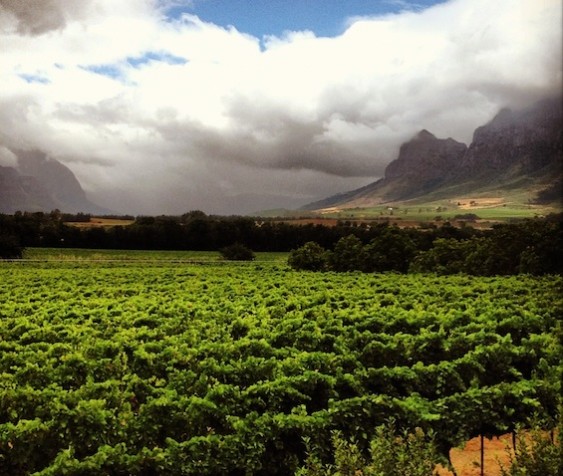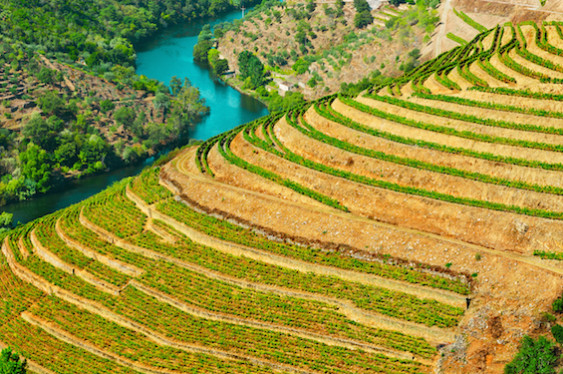American naturalist Dr. Charles Kellogg once wrote, “Essentially, all life depends upon the soil. There can be no life without soil and no soil without life; they have evolved together.”
Nowhere is that special relationship more direct, more obvious or more important than between grape vines and the soils on which they grow. Central to the idea of winemaking today is the concept of terroir – that special mix of climate, winemaking and, yes, soil, that all end up contributing to the taste of a finished wine.
Soil makeup can have a direct impact all sorts of things about the character of the wine, including its acidity, its flavor profile and its tannis. In reality, many wine regions and even individual vineyards and parcels of land can contain several soil types, each contributing a special set of characteristics to the grapes growing there. However, here are six of the major soil types you might hear about on your next vineyard visit, and the influences they have on wine.

Western Australia’s Margaret River produces phenomenal red wines from predominantly clay soils.
Clay: This is that thick, red soil you sometimes see in vineyards, though it can also include a good mix of other types including limestone or sand. You generally find grapes growing on it in hotter regions because it stays cooler and doesn’t drain quite as quickly as some of the other soil types here. Wines made from grapes planted on clay soils tend to be rather powerful and concentrated, what some might call robust.
Notable regions: Barossa, Chianti, Margaret River, Rioja
Conducive varieties: Cabernet Sauvignon, Sangiovese, Shiraz, Tempranillo
Granite: Hard, mineral-rich and heat retentive, granite is good for cooler regions where you want to trap as much heat as possible. It’s also got a relatively high pH, so it helps reduce the acidity of wines.
Notable regions: Beaujolais, Condrieu, Sierra Foothills, Stellenbosch
Conducive varieties: Gamay, Viognier, Zinfandel

South Africa’s Stellenbosch is famous for its ancient granite soils.
Limestone: Many of the world’s most famous wine regions sit on limestone soils, especially those in France. Limestone rocks retain heat from the sun and reflect light back up to the grapes so that they ripen evenly. Though they drain quite well, they can also maintain moisture well, even in times of drought. Finally, because limestone is composed of calcium carbonate (yeah, I just got science-y on you), grape vines planted on it have a better time absorbing nutrients and minerals from the soil and their environment, resulting in complex, nuanced and flavorful wines. Whenever someone refers to a wine’s minerality, chances are it’s because of the limestone soils. Wines from limestone-rich regions tend to have high but balanced acidity, and lots of those stony, rocky notes, and all kinds of interesting flavor profiles.
Notable regions: Burgundy, Champagne, Loire
Conducive varieties: Chardonnay, Pinot Noir, Sauvignon Blanc
Sandy: It might seem counterintuitive to plant anything on sandy soils, but winemakers like to make their vines work a little bit. You don’t want overabundant, juicy grapes. You want them with a good concentration of sugar and ripeness, so fast-draining sand soils can be just the thing. They hold in the heat, so if you’re growing grapes in a cooler region, they can be essential to ripening your berries. They’re also particularly inhospitable to certain threats to the grape vines including that lousy phylloxera bug. Because of that, many notable regions with sandy soils have some very old grape vines that produce highly sought-after wines. Wines from sandy soils tend to have lower tannins and acidity, but are still highly aromatic.
Notable regions: Barolo, Graves, Swartland
Conducive varieties: Cabernet Sauvignon, Nebbiolo, Zinfandel

Portugal’s famous Douro region has schist soils.
Schist: Schist is a crystalline metamorphic rock that’s prized for retaining heat and thus helping to ripen grapes both evenly and fully. It’s rich in magnesium and potassium, two essential elements for the grapes’ growth.
Notable regions: Alsace, Central Otago, Douro
Conducive varieties: Pinot Gris, Pinot Noir, Port varieties (there are a lot)
Volcanic: Volcanic soil comes from…well, former volcanoes. It’s an extremely rich soil, but not in the way that makes a grape vine overly vigorous (and thus bear less-interesting fruit). Instead, it’s got specific minerals like calcium, iron and magnesium that drain particularly well and result in very concentrated wines that remain fruit-forward enough to be fresh and zesty.
Notable regions: Napa, Sicily
Conducive varieties: Cabernet Sauvignon, Nerello Mascalese

